AI Dashboard is available on the Web, Apple, Google, and Microsoft, PRO version
What is the Best Machine Learning Algorithms for Imbalanced Datasets?
In machine learning, imbalanced datasets are those where one class heavily outnumbers the others. This can be due to the nature of the problem or simply because more data is available for one class than the others. Either way, imbalanced datasets can pose a challenge for machine learning algorithms. In this blog post, we’ll take a look at which machine learning algorithms are best suited for imbalanced datasets and why they tend to perform better than others.
For example, in a binary classification problem, if there are 100 observations, and only 10 of them are positive (the rest are negatives), then we say that the dataset is imbalanced. The ratio of positive to negative cases is 1:10.

There are a few reasons why some machine learning algorithms tend to perform better on imbalanced datasets than others. First, certain algorithms are designed to handle imbalanced datasets. Second, some algorithms are more robust to outliers, which can be more common in imbalanced datasets. And third, some algorithms are better able to learn from a limited amount of data, which can be an issue when one class is heavily outnumbered by the others.
Some of the best machine learning algorithms for imbalanced datasets include:
– Support Vector Machines (SVMs),
– Decision Trees,
– Random Forests,
– Naive Bayes Classifiers,
– k-Nearest Neighbors (kNN),
Of these, SVMs tend to be the most popular choice as they are specifically designed to handle imbalanced datasets. SVMs work by finding a hyperplane that maximizes the margin between the two classes. This helps to reduce overfitting and improve generalization. Decision trees and random forests are also popular choices as they are less sensitive to outliers than other algorithms such as linear regression. Naive Bayes classifiers are another good choice as they are able to learn from a limited amount of data. kNN is also a good choice as it is not sensitive to outliers and is able to learn from a limited amount of data. However, it can be computationally intensive for large datasets.
There are two main types of machine learning algorithms: supervised and unsupervised. Supervised algorithms tend to perform better on imbalanced datasets than unsupervised algorithms. In this blog post, we will discuss why this is so and look at some examples.
Supervised Algorithms
Supervised algorithms are those where the target variable is known. In other words, we have training data where the correct answers are already given. The algorithm then learns from this data and is able to generalize to new data. Some examples of supervised algorithms are regression and classification.
Unsupervised Algorithms
Unsupervised algorithms are those where the target variable is not known. With unsupervised algorithms, we only have input data, without any corresponding output labels. The algorithm has to learn from the data itself without any guidance. Some examples of unsupervised algorithms are clustering and dimensionality reduction.
Why Supervised Algorithms Perform Better on Imbalanced Datasets
The reason why supervised algorithms perform better on imbalanced datasets is because they can learn from the training data which cases are more important. With unsupervised algorithms, all data points are treated equally, regardless of whether they are in the minority or majority class.
For example, in a binary classification problem with an imbalanced dataset, let’s say that we want to predict whether a customer will default on their loan payment or not. We have a training dataset of 1000 customers, out of which only 100 (10%) have defaulted on their loan in the past.
If we use a supervised algorithm like logistic regression, the algorithm will learn from the training data that defaulting on a loan is rare (since only 10% of cases in the training data are Positive). This means that it will be more likely to predict correctly that a new customer will not default on their loan (since this is the majority class in the training data).
However, if we use an unsupervised algorithm like k-means clustering, all data points will be treated equally since there is no target variable to guide the algorithm. This means that it might incorrectly cluster together customers who have defaulted on their loans with those who haven’t since there is no guidance provided by a target variable.
Conclusion:
In conclusion, supervised machine learning algorithms tend to perform better on imbalanced datasets than unsupervised machine learning algorithms because they can learn from the training data which cases are more important.
Some machine learning algorithms tend to perform better on highly imbalanced datasets because they are designed to deal with imbalance or because they can learn from both classes simultaneously. If you are working with a highly imbalanced dataset, then you should consider using one of these algorithms.
Thanks for reading!
How are machine learning techniques being used to address unstructured data challenges?
Machine learning techniques are being used to address unstructured data challenges in a number of ways:
- Natural language processing (NLP): NLP algorithms can be used to extract meaningful information from unstructured text data, such as emails, documents, and social media posts. NLP algorithms can be trained to classify text data, identify key terms and concepts, and extract structured data from unstructured text.
- Image recognition: Machine learning algorithms can be used to analyze and classify images, enabling the automatic identification and classification of objects, people, and other elements in images. This can be useful for tasks such as image tagging and search, as well as for applications such as security and surveillance.
- Audio and speech recognition: Machine learning algorithms can be used to analyze and classify audio data, enabling the automatic transcription and translation of spoken language. This can be useful for tasks such as speech-to-text transcription, as well as for applications such as call center automation and language translation.
- Video analysis: Machine learning algorithms can be used to analyze and classify video data, enabling the automatic detection and classification of objects, people, and other elements in video. This can be useful for tasks such as video tagging and search, as well as for applications such as security and surveillance.
Overall, machine learning techniques are being used in a wide range of applications to extract meaningful information from unstructured data, and to enable the automatic classification and analysis of data in a variety of formats.
How is AI and machine learning impacting application development today?
Artificial intelligence (AI) and machine learning are having a significant impact on application development today in a number of ways:
- Enabling new capabilities: AI and machine learning algorithms can be used to enable applications to perform tasks that would be difficult or impossible for humans to do. For example, AI-powered applications can be used to analyze and classify large amounts of data, or to automate complex decision-making processes.
- Improving performance: AI and machine learning algorithms can be used to optimize the performance of applications, making them faster, more efficient, and more accurate. For example, machine learning algorithms can be used to improve the accuracy of predictive models, or to optimize the performance of search algorithms.
- Streamlining development: AI and machine learning algorithms can be used to automate various aspects of application development, such as testing, debugging, and deployment. This can help to streamline the development process and reduce the time and resources needed to build and maintain applications.
- Enhancing user experiences: AI and machine learning algorithms can be used to enhance the user experience of applications, by providing personalized recommendations, recommendations, or by enabling applications to anticipate and respond to the needs and preferences of users.
Overall, AI and machine learning are having a significant impact on application development today, and they are likely to continue to shape the way applications are built and used in the future.
How will advancements in artificial intelligence and machine learning shape the future of work and society?
Advancements in artificial intelligence (AI) and machine learning are likely to shape the future of work and society in a number of ways. Some potential impacts include:
Get 20% off Google Google Workspace (Google Meet) Standard Plan with the following codes: 96DRHDRA9J7GTN6
 Get 20% off Google Workspace (Google Meet) Business Plan (AMERICAS): M9HNXHX3WC9H7YE (Email us for more codes)
Get 20% off Google Workspace (Google Meet) Business Plan (AMERICAS): M9HNXHX3WC9H7YE (Email us for more codes)
Active Anti-Aging Eye Gel, Reduces Dark Circles, Puffy Eyes, Crow's Feet and Fine Lines & Wrinkles, Packed with Hyaluronic Acid & Age Defying Botanicals

- Automation: AI and machine learning algorithms can be used to automate tasks that are currently performed by humans, such as data entry, customer service, and manufacturing. This could lead to changes in the types of jobs that are available and the skills that are in demand, as well as to increased productivity and efficiency.
- Job displacement: While automation may create new job opportunities, it could also lead to job displacement, particularly for workers in industries that are more susceptible to automation. This could lead to social and economic challenges, including unemployment and income inequality.
- Increased efficiency: AI and machine learning algorithms can be used to optimize and streamline business processes, leading to increased efficiency and productivity. This could lead to economic growth and innovation, and could also help to reduce costs for businesses and consumers.
- Enhanced decision-making: AI and machine learning algorithms can be used to analyze large amounts of data and make more informed and accurate decisions. This could lead to improved outcomes in fields such as healthcare, finance, and education, and could also help to reduce bias and improve fairness.
Overall, the impact of AI and machine learning on the future of work and society is likely to be significant and complex, with both potential benefits and challenges. It will be important to consider and address these impacts as these technologies continue to advance and become more widely adopted.
- [N] Feds appoint “AI doomer” to run US AI safety instituteby /u/bregav (Machine Learning) on April 17, 2024 at 10:49 pm
https://arstechnica.com/tech-policy/2024/04/feds-appoint-ai-doomer-to-run-us-ai-safety-institute/ Article intro: Appointed as head of AI safety is Paul Christiano, a former OpenAI researcher who pioneered a foundational AI safety technique called reinforcement learning from human feedback (RLHF), but is also known for predicting that "there's a 50 percent chance AI development could end in 'doom.'" While Christiano's research background is impressive, some fear that by appointing a so-called "AI doomer," NIST may be risking encouraging non-scientific thinking that many critics view as sheer speculation. submitted by /u/bregav [link] [comments]
- [D] Is Risk Aversion Crushing the Adoption of Cloud Abstractions?by /u/Ok_Post_149 (Machine Learning) on April 17, 2024 at 9:47 pm
Hey All, I think many of us can agree that defining the hardware we want to use right next to the piece of code we are running is objectively a much better developer experience. I have always loved the idea of lowering the barrier when it comes to running code in the cloud. As more cloud abstractions hit the market, I was honestly really surprised by the lack of adoption. There aren't any unicorns (I don't think any actually) in this space yet, just series A businesses. After speaking with a handful of Data Scientists, Machine Learning Engineers, and DevOps Engineers, it started to dawn on me that risk aversion is causing most of the friction. Using a fully managed service can definitely have some upsides, and in many cases, I prefer using them, but convincing your boss to pipe petabytes of data to another company's cloud and incur 3-5x compute costs probably isn't going to sit well. There are also some open source alternatives but they are intentionally difficult to configure so you pay for their premium offerings that reduce config setup. Would love to hear everyone's thoughts, especially those who work at lean startups and global 5,000 companies. submitted by /u/Ok_Post_149 [link] [comments]
- [Discussion] PhD in Statistics Job Prospectsby /u/SpiritualCellist4303 (Machine Learning) on April 17, 2024 at 8:59 pm
I am curious to know the job opportunities in Banking & Insurance for someone pursuing PhD in Statistics given the current market conditions. submitted by /u/SpiritualCellist4303 [link] [comments]
- [D] Is there a way to determine if the representations a model learns are spherical or hyperbolic?by /u/Mad_Scientist2027 (Machine Learning) on April 17, 2024 at 8:49 pm
Title. Is there a way to determine the degree of sphericity or hyperbolicity of the embeddings a feature extractor learns for a set of examples it has been trained on / will be tested on? I am new to geometry in deep learning. It would be amazing if anyone could also point me to a paper or a book to get started on this. Thanks in advance. submitted by /u/Mad_Scientist2027 [link] [comments]
- [R] RuleOpt: Optimization-Based Rule Learning for Classificationby /u/zedeleyici3401 (Machine Learning) on April 17, 2024 at 7:34 pm
Paper: https://arxiv.org/abs/2104.10751 Package: https://github.com/sametcopur/ruleopt Documentation: https://ruleopt.readthedocs.io/ RuleOpt is an optimization-based rule learning algorithm designed for classification problems. Focusing on scalability and interpretability, RuleOpt utilizes linear programming for rule generation and extraction. The Python library ruleopt is capable of extracting rules from ensemble models, and it also implements a novel rule generation scheme. The library ensures compatibility with existing machine learning pipelines, and it is especially efficient for tackling large-scale problems. Here are a few highlights of ruleopt: Efficient Rule Generation and Extraction: Leverages linear programming for scalable rule generation (stand-alone machine learning method) and rule extraction from trained random forest and boosting models. Interpretability: Prioritizes model transparency by assigning costs to rules in order to achieve a desirable balance with accuracy. Integration with Machine Learning Libraries: Facilitates smooth integration with well-known Python libraries scikit-learn, LightGBM, and XGBoost, and existing machine learning pipelines. Extensive Solver Support: Supports a wide array of solvers, including Gurobi, CPLEX and OR-Tools. submitted by /u/zedeleyici3401 [link] [comments]
- [D] LSTM Time Series Forecastingby /u/StressAccomplished26 (Machine Learning) on April 17, 2024 at 7:15 pm
I've been using LSTM models for time series forecasting and have noticed they perform well for predicting the immediate next step. However, when attempting multi-step predictions to forecast one week ahead (168 periods, with hourly data), the performance drops significantly. Currently, I'm using a recursive approach: feeding back the prediction as the next input (closed loop). This method isn't yielding good results, although open loop predictions are much more accurate. Is there a better technique for enhancing LSTM's multi-step prediction accuracy? Are LSTMs not useful for doing multi step forecasting? Any links or resources to articles explain multi step forecasting with LSTMs would be appreciated. https://preview.redd.it/30y3m16gr3vc1.png?width=833&format=png&auto=webp&s=6d6b29e05b105b50d2689127ea6881d1ec667903 https://preview.redd.it/a971j16gr3vc1.png?width=833&format=png&auto=webp&s=fec277d9343c5f702247a6135dbb630358c14cca submitted by /u/StressAccomplished26 [link] [comments]
- [R] ResearchAgent: Iterative Research Idea Generation over Scientific Literature with Large Language Modelsby /u/SeawaterFlows (Machine Learning) on April 17, 2024 at 5:49 pm
Paper: https://arxiv.org/abs/2404.07738 Abstract: Scientific Research, vital for improving human life, is hindered by its inherent complexity, slow pace, and the need for specialized experts. To enhance its productivity, we propose a ResearchAgent, a large language model-powered research idea writing agent, which automatically generates problems, methods, and experiment designs while iteratively refining them based on scientific literature. Specifically, starting with a core paper as the primary focus to generate ideas, our ResearchAgent is augmented not only with relevant publications through connecting information over an academic graph but also entities retrieved from an entity-centric knowledge store based on their underlying concepts, mined and shared across numerous papers. In addition, mirroring the human approach to iteratively improving ideas with peer discussions, we leverage multiple ReviewingAgents that provide reviews and feedback iteratively. Further, they are instantiated with human preference-aligned large language models whose criteria for evaluation are derived from actual human judgments. We experimentally validate our ResearchAgent on scientific publications across multiple disciplines, showcasing its effectiveness in generating novel, clear, and valid research ideas based on human and model-based evaluation results. submitted by /u/SeawaterFlows [link] [comments]
- [R] Ctrl-Adapter: An Efficient and Versatile Framework for Adapting Diverse Controls to Any Diffusion Modelby /u/SeawaterFlows (Machine Learning) on April 17, 2024 at 5:34 pm
Paper: https://arxiv.org/abs/2404.09967 Code: https://github.com/HL-hanlin/Ctrl-Adapter Models: https://huggingface.co/hanlincs/Ctrl-Adapter Project page: https://ctrl-adapter.github.io/ Abstract: ControlNets are widely used for adding spatial control in image generation with different conditions, such as depth maps, canny edges, and human poses. However, there are several challenges when leveraging the pretrained image ControlNets for controlled video generation. First, pretrained ControlNet cannot be directly plugged into new backbone models due to the mismatch of feature spaces, and the cost of training ControlNets for new backbones is a big burden. Second, ControlNet features for different frames might not effectively handle the temporal consistency. To address these challenges, we introduce Ctrl-Adapter, an efficient and versatile framework that adds diverse controls to any image/video diffusion models, by adapting pretrained ControlNets (and improving temporal alignment for videos). Ctrl-Adapter provides diverse capabilities including image control, video control, video control with sparse frames, multi-condition control, compatibility with different backbones, adaptation to unseen control conditions, and video editing. In Ctrl-Adapter, we train adapter layers that fuse pretrained ControlNet features to different image/video diffusion models, while keeping the parameters of the ControlNets and the diffusion models frozen. Ctrl-Adapter consists of temporal and spatial modules so that it can effectively handle the temporal consistency of videos. We also propose latent skipping and inverse timestep sampling for robust adaptation and sparse control. Moreover, Ctrl-Adapter enables control from multiple conditions by simply taking the (weighted) average of ControlNet outputs. With diverse image/video diffusion backbones (SDXL, Hotshot-XL, I2VGen-XL, and SVD), Ctrl-Adapter matches ControlNet for image control and outperforms all baselines for video control (achieving the SOTA accuracy on the DAVIS 2017 dataset) with significantly lower computational costs (less than 10 GPU hours). submitted by /u/SeawaterFlows [link] [comments]
- [D] Question: Time-series decoding to non-temporal latent space?by /u/reesespike (Machine Learning) on April 17, 2024 at 5:08 pm
Hello! I am a researcher in computational neuroscience, looking to apply some contemporary machine learning techniques to fMRI timeseries data. I have a collection of highly dimensional 4D fMRI timeseries data collected while subjects were observing naturalistic images from COCO at regular intervals. We currently have decoding models that take preprocessed "snapshots" of this timeseries data flattened into an activation pattern that is aggregated over the short period the image was being observed, and use some machine learning models to decode and reconstruct the image content from the brain. (See some of my recent work). I am curious what sort of machine learning techniques exist that might be able to address the time-series data itself, without having to collapse the timeseries to a single snapshot to perform our decoding process. What I am envisioning is a model (perhaps a transformer) that can take as input a highly dimensional multichannel timeseries and output a flattened latent representation (say, a CLIP vector) corresponding to an image stimulus, or even a series of latent vectors separated by a known regular interval (as we have in our data for the different image presentations). To my knowledge most of the work in machine learning with time series data is in forecasting, but what I want is a static (or potentially repetitive) output. My hope is that the more detailed timeseries data will have additional signal that will boost decoding performance for fMRI vision decoding. Is there any existing work in the field of ML that has tackled a similar problem? submitted by /u/reesespike [link] [comments]
- [D] Microsoft AutoML for ML.NET with DirectMLby /u/tradingnumbers (Machine Learning) on April 17, 2024 at 4:13 pm
I have built a model for detecting outliers in a data series using ML.NET. I read from the dev forums that ML.NET using DirectML can support the new NPUs built into the new Core Ultra processors from Intel. I have not been able to find evidence that this is true for AutoML from the Microsoft team. Does anyone have experience using AutoML with DirectML backend? submitted by /u/tradingnumbers [link] [comments]
- [D] In cross-attention, why is Q taken from decoder, and K taken from the encoders output respectively?by /u/shuvamg007 (Machine Learning) on April 17, 2024 at 2:49 pm
I looked up in so many places but couldn't find an answer. What happens if we switch Q and K to be from the encoder and decoder respectively? Would it make any difference? submitted by /u/shuvamg007 [link] [comments]
- [D] How does visual embedding coexist with language embedding space in Vision Language Model?by /u/E-fazz (Machine Learning) on April 17, 2024 at 2:41 pm
Hello everyone! I'm excited to discuss about Large Vision Language Model (LVLM). Since we're probably the biggest community into LLMs, I thought this channel would be the perfect place to start this conversation. Also, there isn't much out there on combining vision and language embeddings. A little background on LVLMs: They typically consist of a vision encoder for images, a regular tokenizer for text, a projection layer like an MLP to align vision features with text embedding spaces, and finally, merging both image and text embeddings for sending into the LLM model. The input includes both text and images, while the output is text, making it a multimodal LLM. Check out this diagram from the LLaVA paper for a visual breakdown: https://preview.redd.it/l222askgu1vc1.png?width=1607&format=png&auto=webp&s=ef011e16301c22b4751d8d0a8f3698f70e3ffd26 Starting with a vision encoder like CLIP ViT, the model learns visual information from images, then uses an MLP to project this onto the LLM's embedding space. The paper calls this feature alignment. I'm curious about how vision embeddings interact with text embeddings, so I experimented by visualizing them in 3D with PCA. For instance, take the llava-7B model—it uses the llama-7B backend with a 32k vocabulary size and 4096 dimensions, making the embedding size: [32000,4096]. I used a simple prompt, "Explain this image to me," with a picture of a cat to see how the embeddings appear in our space. https://preview.redd.it/032oy0ynu1vc1.png?width=662&format=png&auto=webp&s=d037bbecc976392e159a1c1bde775ef1e148488d Adding visual tokens changes the dynamics. Each image transforms into 576 vision tokens of shape [576,4096]. Check out how the plot adjusts when these tokens are included: https://preview.redd.it/9c3cu7ksu1vc1.png?width=660&format=png&auto=webp&s=c0aab6782fc309eba09ec660759bfaf48582dc14 The entire text embedding seems smaller, represented by tiny blue dots containing the entire llama-7B vocabulary. To zoom in further, I highlighted only the visual tokens near the embedding (meaning higher cosine similarity). Here’s how they cluster together: https://preview.redd.it/vdeacylwu1vc1.png?width=566&format=png&auto=webp&s=42441b4fd515cee916b40243429b4aa6820b998c So what do I think? First, we aren't directly converting visual tokens into text. A recent Google paper tried and found it wasn't the best approach. It seems that visual reasoning hovers close to text embedding spaces, likely because images are denser in information, requiring more tokens to represent visual concepts. Secondly, this setup seems right for now. Visual tokens, in context with text tokens, add image-derived context to the LLM, enabling it to 'see' an image. Lastly, even though llava is performing well on some benchmarks in visual reasoning, it might not be the most efficient at image representation yet. Some recent studies talked about it's sparse attention phenomenon, especially with visual tokens in LVLMs. We are just lucky because the attention algorithm attends to only meaningful visual tokens and ignores the noises. What do you think? Thanks for reading. 🙂 submitted by /u/E-fazz [link] [comments]
- Good Resources on Time Series Forecasting? [D]by /u/secret_fyre (Machine Learning) on April 17, 2024 at 2:26 pm
Can anyone recommend any good resources on modern time series forecasting with machine learning? I found one book on time series forecasting on Amazon with great reviews called Time Series Forecasting in Python. Having said that, a lot of machine learning books and resources seem to gloss over time series. What are some good resources (either entire books, or chapters in books) that cover time series? submitted by /u/secret_fyre [link] [comments]
- [D] Best NLP encoders (BERT...) for NER with very low data finetuning ?by /u/LelouchZer12 (Machine Learning) on April 17, 2024 at 1:40 pm
Hi I am aware that a lot of transformer encoder variations exist (BERT, DistilBERT, Deberta, Roberta ...). However I am not interested in the best ones (that should probably be Deberta V3) but rather the ones that can quickly have decent results even with very few example examples (like ~50,100 sentences each containing maybe 1, 2 or 3 entities). I have done a few experiments in english, and to my surprise it seems that the one that perform best with as few data as possible is the original english BERT model (google-bert/bert-base-uncased on HF), and not one of the more recent variations. I have also done other experiments in french, and the multilingual BERT also quickly get decent results faster than models specially trained on french data (e.g CamemBERT). The models I've compared include : bert, bert multilingual, distilbert, distilbert multilingual, roberta, xlm-roberta, camembert, camemberta, distilroberta, debertav3, debertav3 multilingual What are your thought about this ? Is it something surprising or unusual ? Any advice ? submitted by /u/LelouchZer12 [link] [comments]
- Word embedding - contextualised vs word2vec [D]by /u/datashri (Machine Learning) on April 17, 2024 at 1:03 pm
Noob question about word embeddings - As far as I understand so far - Contextualized word embeddings generated by BERT and other LLM type models use the attention mechanism and take into account the context of the word. So the same word in different sentences can have different vectors. This ^ is opposed to the older approach of models like word2vec - embeddings generated by word2vec are not contexual. However, looking closely at the CBOW and skip-gram models. it seems that they too try to predict the central word based on the surrounding (context) words. So the embeddings generated by word2vec can also be contextual. So they're both contexutal? What am I missing? submitted by /u/datashri [link] [comments]
- [D] What is the modern Approach to Speaker Verification?by /u/Puzzleheaded_Bee5489 (Machine Learning) on April 17, 2024 at 12:39 pm
By modern I mean any new innovation in the field of Speaker Verification. I was researching more about ML in the field of Audio - Speech in particular and I notice there are so many things going on right now with LLM being integrated into almost everything. So I was curious to know if there is any new innovation in the field of Speaker Recognition. Some of the cool libraries I came across were - pyannote.audio, speechbrain, Nvidia NeMo which provide the framework and pre-trained models for the task of Speaker Verification. Thanks in advance! submitted by /u/Puzzleheaded_Bee5489 [link] [comments]
- [D] hyperparameter tuning, learn or not learn at all?by /u/FFFFFQQQQ (Machine Learning) on April 17, 2024 at 12:30 pm
I have been doing some fine tuning work, and I am adjusting the weight decay and learning rate of my transformer models. My base model is BERT, and the fine tune data set is quite small. The issue I had was when I set incorrect hyperparameters, the model do not do anything. For example, if the optimal learning rate is 5e-3, but I am tuning it using 1e-2, 1e-3, 1e-4. Then the F measures are all 0.0. I understand the hyperparameter affects the results a lot. But I didn't expect it to be learn or not learn at all. I wonder if it is normal. cause 5e-3 and 1e-3 is not that much difference? submitted by /u/FFFFFQQQQ [link] [comments]
- [Discussion]ACM MM2024by /u/INeedPapers_TTT (Machine Learning) on April 17, 2024 at 10:35 am
This is the first year (if I remember correclty) that MM shifts from CMT to Openreview. As an author I've been sensing something wrong since I created my submission, i.e. desk rejection even before abstract ddl, inconsistency about whether to include submission number within the paper, etc. Now I've heard a lot from social media that many authors without many/any publications (yes including me) have been nominated as reviewers due to their lack of reviewers for the submission volume. I'm very concerned about the quality of the reviews and the submission in MM2024 this year. submitted by /u/INeedPapers_TTT [link] [comments]
- Time-series forecasting on batch process [P]by /u/Bitter__Physics (Machine Learning) on April 17, 2024 at 10:21 am
I am currently working on a fed batch process and I need to know if time series can be achieved with good accuracy. The idea is that there is a set of differential equations which create the data for me. After this data, a model is created with high accuracy. The question is, is it possible to achieve a time series prediction by giving the model a complete different set of initial conditions? My job is to have this model predict in completely different initial conditions so there is no need for real life testing on the batch process but just computational. I was looking into Neural ODE, UDE etc. in order for the model to understand the dynamics but I am also not sure if other methods of time series would work. (The data has no periodicity, correlated between each other etc.) What do you think would be the best approach since I am constantly trying different methods but none give accurate results? submitted by /u/Bitter__Physics [link] [comments]
- [D] What comes first, math, or algorithm in research?by /u/Deep-Station-1746 (Machine Learning) on April 17, 2024 at 8:22 am
I'm learning meths behind diffusion right now (DDPM, Score-based, and other approaches). I'm wondering how exactly did researchers come up with the idea? Does inventing new approaches go something like this? 1. We want to make better image generator. 2. Oh, the data will never be enough... 3. Let's multiply data - by adding some noise corruption 4. This this works well, what if we make a denoising network? 5. What if we make network that makes an image from pure noise? 6. That doesn't work, what if we did smaller denoising steps? 7. This works! Now, let's create some theory on why it works. 8. Write the paper Or something like this? 1. We want to make better image generator. 2. We know "nonequilibrium thermodynamics" really well and want to try applying it somehow 3. We somehow come up with an algorithm that relies on math from that theory 4. It works! 5. We write the paper. Which comes first usually? Math or Algorithm? submitted by /u/Deep-Station-1746 [link] [comments]
Active Hydrating Toner, Anti-Aging Replenishing Advanced Face Moisturizer, with Vitamins A, C, E & Natural Botanicals to Promote Skin Balance & Collagen Production, 6.7 Fl Oz


Age Defying 0.3% Retinol Serum, Anti-Aging Dark Spot Remover for Face, Fine Lines & Wrinkle Pore Minimizer, with Vitamin E & Natural Botanicals


Firming Moisturizer, Advanced Hydrating Facial Replenishing Cream, with Hyaluronic Acid, Resveratrol & Natural Botanicals to Restore Skin's Strength, Radiance, and Resilience, 1.75 Oz

Skin Stem Cell Serum


Smartphone 101 - Pick a smartphone for me - android or iOS - Apple iPhone or Samsung Galaxy or Huawei or Xaomi or Google Pixel
Can AI Really Predict Lottery Results? We Asked an Expert.

Djamgatech

Read Photos and PDFs Aloud for me iOS
Read Photos and PDFs Aloud for me android
Read Photos and PDFs Aloud For me Windows 10/11
Read Photos and PDFs Aloud For Amazon
Get 20% off Google Workspace (Google Meet) Business Plan (AMERICAS): M9HNXHX3WC9H7YE (Email us for more)
Get 20% off Google Google Workspace (Google Meet) Standard Plan with the following codes: 96DRHDRA9J7GTN6(Email us for more)
FREE 10000+ Quiz Trivia and and Brain Teasers for All Topics including Cloud Computing, General Knowledge, History, Television, Music, Art, Science, Movies, Films, US History, Soccer Football, World Cup, Data Science, Machine Learning, Geography, etc....

List of Freely available programming books - What is the single most influential book every Programmers should read
- Bjarne Stroustrup - The C++ Programming Language
- Brian W. Kernighan, Rob Pike - The Practice of Programming
- Donald Knuth - The Art of Computer Programming
- Ellen Ullman - Close to the Machine
- Ellis Horowitz - Fundamentals of Computer Algorithms
- Eric Raymond - The Art of Unix Programming
- Gerald M. Weinberg - The Psychology of Computer Programming
- James Gosling - The Java Programming Language
- Joel Spolsky - The Best Software Writing I
- Keith Curtis - After the Software Wars
- Richard M. Stallman - Free Software, Free Society
- Richard P. Gabriel - Patterns of Software
- Richard P. Gabriel - Innovation Happens Elsewhere
- Code Complete (2nd edition) by Steve McConnell
- The Pragmatic Programmer
- Structure and Interpretation of Computer Programs
- The C Programming Language by Kernighan and Ritchie
- Introduction to Algorithms by Cormen, Leiserson, Rivest & Stein
- Design Patterns by the Gang of Four
- Refactoring: Improving the Design of Existing Code
- The Mythical Man Month
- The Art of Computer Programming by Donald Knuth
- Compilers: Principles, Techniques and Tools by Alfred V. Aho, Ravi Sethi and Jeffrey D. Ullman
- Gödel, Escher, Bach by Douglas Hofstadter
- Clean Code: A Handbook of Agile Software Craftsmanship by Robert C. Martin
- Effective C++
- More Effective C++
- CODE by Charles Petzold
- Programming Pearls by Jon Bentley
- Working Effectively with Legacy Code by Michael C. Feathers
- Peopleware by Demarco and Lister
- Coders at Work by Peter Seibel
- Surely You're Joking, Mr. Feynman!
- Effective Java 2nd edition
- Patterns of Enterprise Application Architecture by Martin Fowler
- The Little Schemer
- The Seasoned Schemer
- Why's (Poignant) Guide to Ruby
- The Inmates Are Running The Asylum: Why High Tech Products Drive Us Crazy and How to Restore the Sanity
- The Art of Unix Programming
- Test-Driven Development: By Example by Kent Beck
- Practices of an Agile Developer
- Don't Make Me Think
- Agile Software Development, Principles, Patterns, and Practices by Robert C. Martin
- Domain Driven Designs by Eric Evans
- The Design of Everyday Things by Donald Norman
- Modern C++ Design by Andrei Alexandrescu
- Best Software Writing I by Joel Spolsky
- The Practice of Programming by Kernighan and Pike
- Pragmatic Thinking and Learning: Refactor Your Wetware by Andy Hunt
- Software Estimation: Demystifying the Black Art by Steve McConnel
- The Passionate Programmer (My Job Went To India) by Chad Fowler
- Hackers: Heroes of the Computer Revolution
- Algorithms + Data Structures = Programs
- Writing Solid Code
- JavaScript - The Good Parts
- Getting Real by 37 Signals
- Foundations of Programming by Karl Seguin
- Computer Graphics: Principles and Practice in C (2nd Edition)
- Thinking in Java by Bruce Eckel
- The Elements of Computing Systems
- Refactoring to Patterns by Joshua Kerievsky
- Modern Operating Systems by Andrew S. Tanenbaum
- The Annotated Turing
- Things That Make Us Smart by Donald Norman
- The Timeless Way of Building by Christopher Alexander
- The Deadline: A Novel About Project Management by Tom DeMarco
- The C++ Programming Language (3rd edition) by Stroustrup
- Patterns of Enterprise Application Architecture
- Computer Systems - A Programmer's Perspective
- Agile Principles, Patterns, and Practices in C# by Robert C. Martin
- Growing Object-Oriented Software, Guided by Tests
- Framework Design Guidelines by Brad Abrams
- Object Thinking by Dr. David West
- Advanced Programming in the UNIX Environment by W. Richard Stevens
- Hackers and Painters: Big Ideas from the Computer Age
- The Soul of a New Machine by Tracy Kidder
- CLR via C# by Jeffrey Richter
- The Timeless Way of Building by Christopher Alexander
- Design Patterns in C# by Steve Metsker
- Alice in Wonderland by Lewis Carol
- Zen and the Art of Motorcycle Maintenance by Robert M. Pirsig
- About Face - The Essentials of Interaction Design
- Here Comes Everybody: The Power of Organizing Without Organizations by Clay Shirky
- The Tao of Programming
- Computational Beauty of Nature
- Writing Solid Code by Steve Maguire
- Philip and Alex's Guide to Web Publishing
- Object-Oriented Analysis and Design with Applications by Grady Booch
- Effective Java by Joshua Bloch
- Computability by N. J. Cutland
- Masterminds of Programming
- The Tao Te Ching
- The Productive Programmer
- The Art of Deception by Kevin Mitnick
- The Career Programmer: Guerilla Tactics for an Imperfect World by Christopher Duncan
- Paradigms of Artificial Intelligence Programming: Case studies in Common Lisp
- Masters of Doom
- Pragmatic Unit Testing in C# with NUnit by Andy Hunt and Dave Thomas with Matt Hargett
- How To Solve It by George Polya
- The Alchemist by Paulo Coelho
- Smalltalk-80: The Language and its Implementation
- Writing Secure Code (2nd Edition) by Michael Howard
- Introduction to Functional Programming by Philip Wadler and Richard Bird
- No Bugs! by David Thielen
- Rework by Jason Freid and DHH
- JUnit in Action
#BlackOwned #BlackEntrepreneurs #BlackBuniness #AWSCertified #AWSCloudPractitioner #AWSCertification #AWSCLFC02 #CloudComputing #AWSStudyGuide #AWSTraining #AWSCareer #AWSExamPrep #AWSCommunity #AWSEducation #AWSBasics #AWSCertified #AWSMachineLearning #AWSCertification #AWSSpecialty #MachineLearning #AWSStudyGuide #CloudComputing #DataScience #AWSCertified #AWSSolutionsArchitect #AWSArchitectAssociate #AWSCertification #AWSStudyGuide #CloudComputing #AWSArchitecture #AWSTraining #AWSCareer #AWSExamPrep #AWSCommunity #AWSEducation #AzureFundamentals #AZ900 #MicrosoftAzure #ITCertification #CertificationPrep #StudyMaterials #TechLearning #MicrosoftCertified #AzureCertification #TechBooks
Top 1000 Canada Quiz and trivia: CANADA CITIZENSHIP TEST- HISTORY - GEOGRAPHY - GOVERNMENT- CULTURE - PEOPLE - LANGUAGES - TRAVEL - WILDLIFE - HOCKEY - TOURISM - SCENERIES - ARTS - DATA VISUALIZATION

Top 1000 Africa Quiz and trivia: HISTORY - GEOGRAPHY - WILDLIFE - CULTURE - PEOPLE - LANGUAGES - TRAVEL - TOURISM - SCENERIES - ARTS - DATA VISUALIZATION

Exploring the Pros and Cons of Visiting All Provinces and Territories in Canada.

Exploring the Advantages and Disadvantages of Visiting All 50 States in the USA

Health Health, a science-based community to discuss health news and the coronavirus (COVID-19) pandemic
- Proposed CA bill would ban methylene chloride from decaf coffee productionby /u/lurker_bee on April 17, 2024 at 3:37 pm
submitted by /u/lurker_bee [link] [comments]
- Single injection of ketamine can reduce postpartum depression by 75%by /u/euronews-english on April 17, 2024 at 3:16 pm
submitted by /u/euronews-english [link] [comments]
- Noise can hurt your heart, disrupt your endocrine system, and make it difficult to think and learnby /u/scientificamerican on April 17, 2024 at 2:06 pm
submitted by /u/scientificamerican [link] [comments]
- Researchers Identify the Bacteria Responsible for Meningitis in Babies | A milestone study has identified that 50% of neonatal meningitis infections are caused by two types of E. coli.by /u/chrisdh79 on April 17, 2024 at 12:20 pm
submitted by /u/chrisdh79 [link] [comments]
- Nestlé adds sugar to infant milk sold in poorer countries, report finds | Swiss food firm’s infant formula and cereal sold in global south ignore WHO anti-obesity guidelines for Europe, says Public Eyeby /u/chrisdh79 on April 17, 2024 at 11:16 am
submitted by /u/chrisdh79 [link] [comments]
Today I Learned (TIL) You learn something new every day; what did you learn today? Submit interesting and specific facts about something that you just found out here.
- TIL in 2007 only 700 Florida snail kite birds remained because newly introduced invasive snails were too big to eat. From 2007 to 2017, these birds rapidly evolved 8-12% larger beaks because the smallest birds all starved to death. As of 2022 they have recovered to 3,000 individuals.by /u/admiralturtleship on April 17, 2024 at 2:07 pm
submitted by /u/admiralturtleship [link] [comments]
- TIL about the Dyatlov Pass incident- A mysterious event where nine Russian hikers died in the Ural Mountains in 1959 under unexplained and bizarre circumstances, sparking decades of conspiracy theories.by /u/RoyalDoll69 on April 17, 2024 at 1:28 pm
submitted by /u/RoyalDoll69 [link] [comments]
- TIL birds in Australia, known as “fire hawks”, are known to utilize and spread fires in order to flush out prey.by /u/Quarantine722 on April 17, 2024 at 12:30 pm
submitted by /u/Quarantine722 [link] [comments]
- TIL in 1995, producers for Striptease and G.I. Jane got into a bidding war to see who could get Demi Moore to film first. Striptease won which resulted in Moore being offered 12.5 million dollars which was more money than any other woman in Hollywood had ever been offered at the time.by /u/ColeBelthazorTurner on April 17, 2024 at 12:07 pm
submitted by /u/ColeBelthazorTurner [link] [comments]
- TIL that a man named Robert Anderson is credited for inventing the first Electric car sometime between 1832 and 1839.by /u/doodly-123 on April 17, 2024 at 11:07 am
submitted by /u/doodly-123 [link] [comments]
Reddit Science This community is a place to share and discuss new scientific research. Read about the latest advances in astronomy, biology, medicine, physics, social science, and more. Find and submit new publications and popular science coverage of current research.
- New research provides evidence that an endorsement from Trump can reduce the likelihood of voters supporting a Republican candidate in a general election | The impact of Trump’s endorsements appears to vary significantly between parties, affecting Democrats more than Republicans.by /u/chrisdh79 on April 17, 2024 at 2:45 pm
submitted by /u/chrisdh79 [link] [comments]
- Climate change appears to be playing a role in disease related to problems in immune health—from nasal allergies to food allergies to rheumatoid arthritis to colorectal cancer—that have spiked in recent yearsby /u/giuliomagnifico on April 17, 2024 at 2:34 pm
submitted by /u/giuliomagnifico [link] [comments]
- Researchers created an improved charging protocol with a high-frequency pulsed current. This protocol might help lithium-ion batteries last much longer, potentially doubling the cycle life with 80% capacity retentionby /u/giuliomagnifico on April 17, 2024 at 2:01 pm
submitted by /u/giuliomagnifico [link] [comments]
- A review concluded that "psilocybin treatment for depression is safe and efficacious."by /u/OregonTripleBeam on April 17, 2024 at 1:44 pm
submitted by /u/OregonTripleBeam [link] [comments]
- Children improved their diet quality when they ate school-prepared lunches following the Healthy, Hunger-Free Kids Act nutritional guidelines according to a new studyby /u/universityofga on April 17, 2024 at 1:05 pm
submitted by /u/universityofga [link] [comments]
Reddit Sports Sports News and Highlights from the NFL, NBA, NHL, MLB, MLS, and leagues around the world.
- Zion's plight: From the precipice of redemption to another setbackby /u/Oldtimer_2 on April 17, 2024 at 2:50 pm
submitted by /u/Oldtimer_2 [link] [comments]
- LeBron James headlines Team USA’s 2024 Paris Olympics men’s basketball squadby /u/kundu123 on April 17, 2024 at 2:39 pm
Can USA make it five in a row? submitted by /u/kundu123 [link] [comments]
- Ex-Piston Will Bynum sentenced to 18 months in prison in NBA insurance fraud schemeby /u/Oldtimer_2 on April 17, 2024 at 1:54 pm
submitted by /u/Oldtimer_2 [link] [comments]
- Woman who accused Trevor Bauer of sexual assault indicted for fraud in Arizonaby /u/Oldtimer_2 on April 17, 2024 at 1:44 pm
submitted by /u/Oldtimer_2 [link] [comments]
- Warriors vouch for Klay return after scoreless play-in performanceby /u/Oldtimer_2 on April 17, 2024 at 1:17 pm
submitted by /u/Oldtimer_2 [link] [comments]
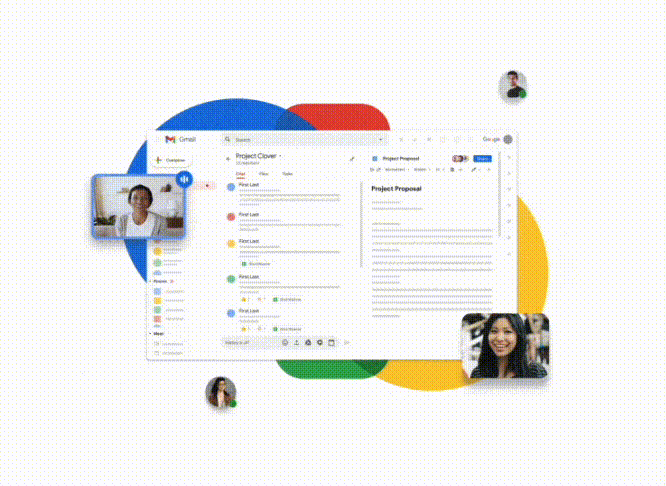








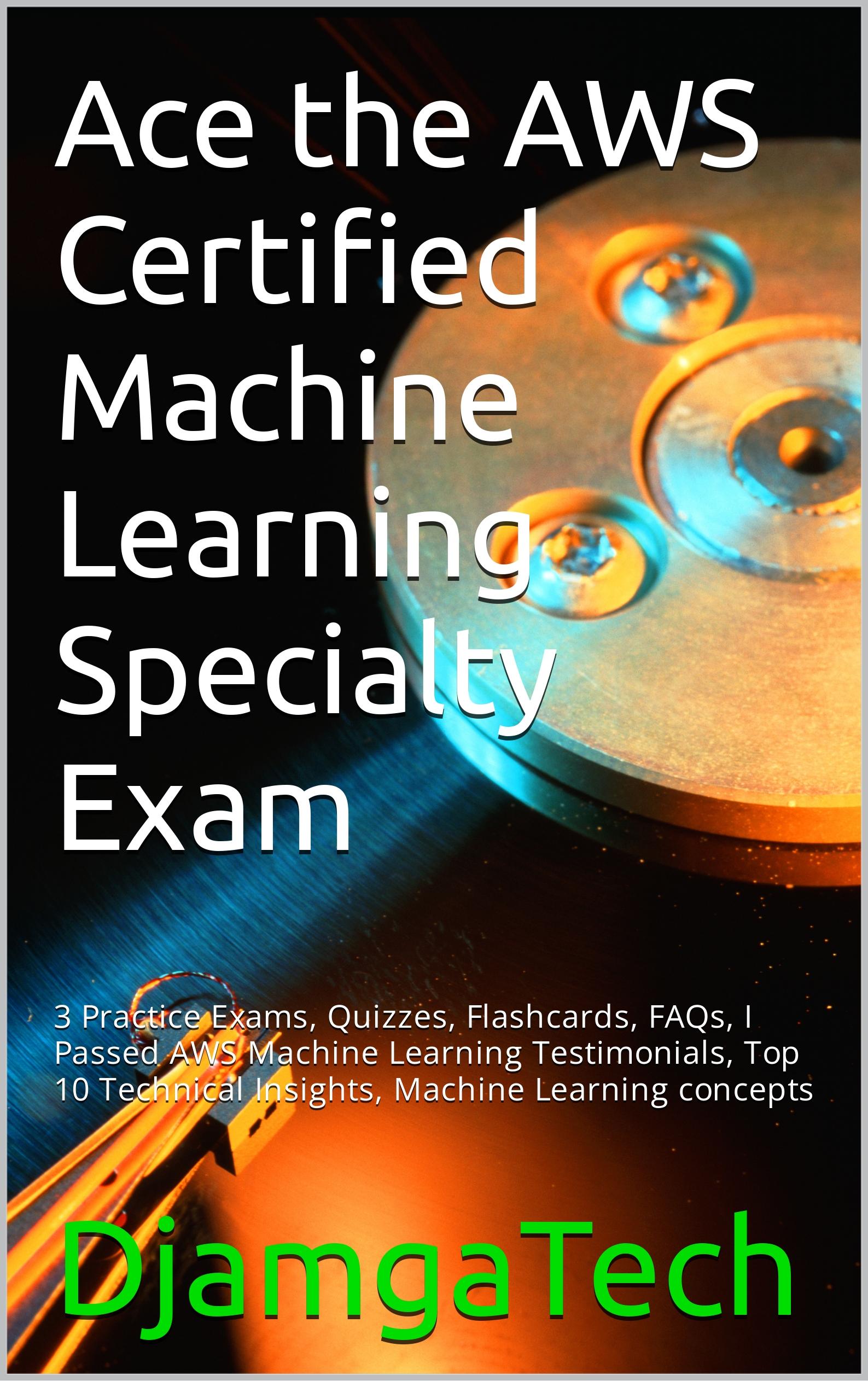

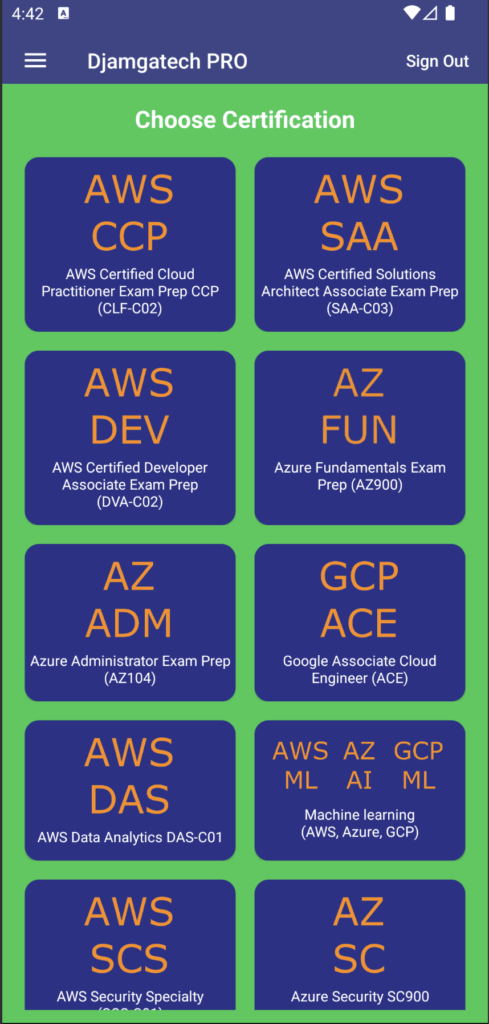



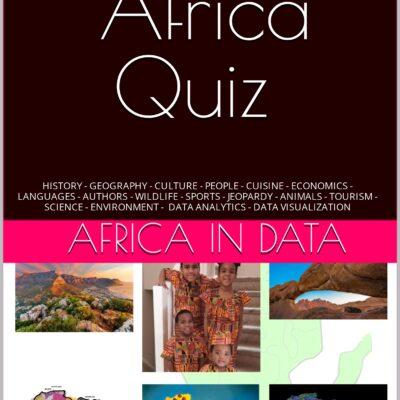

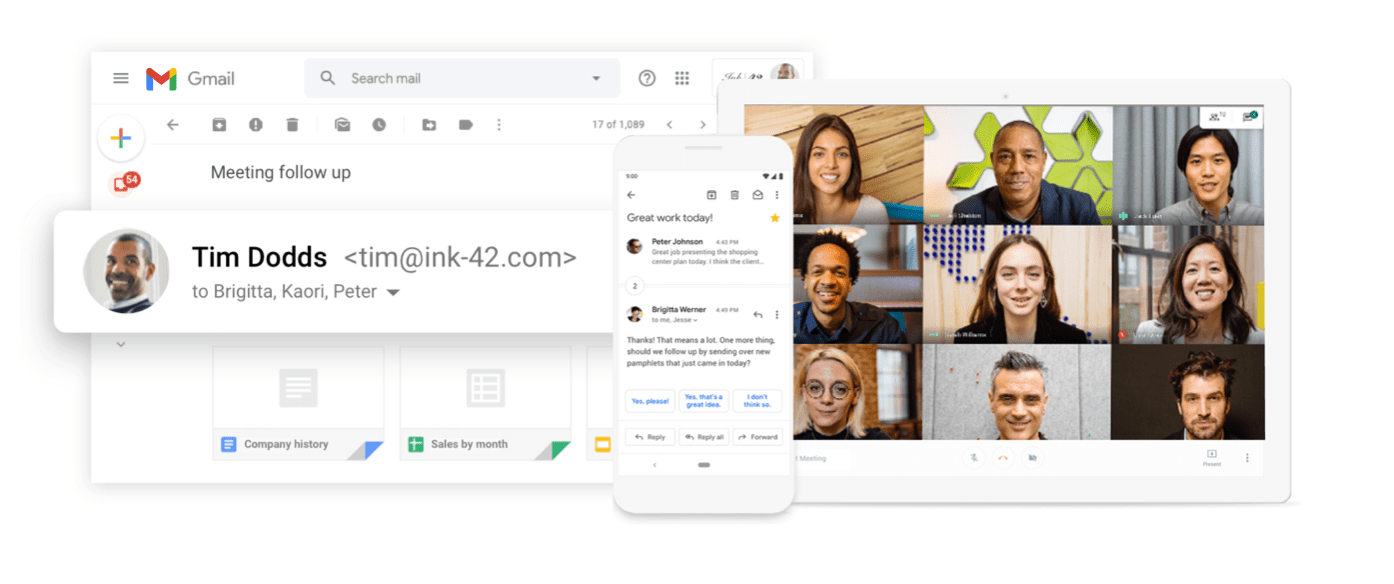 96DRHDRA9J7GTN6
96DRHDRA9J7GTN6